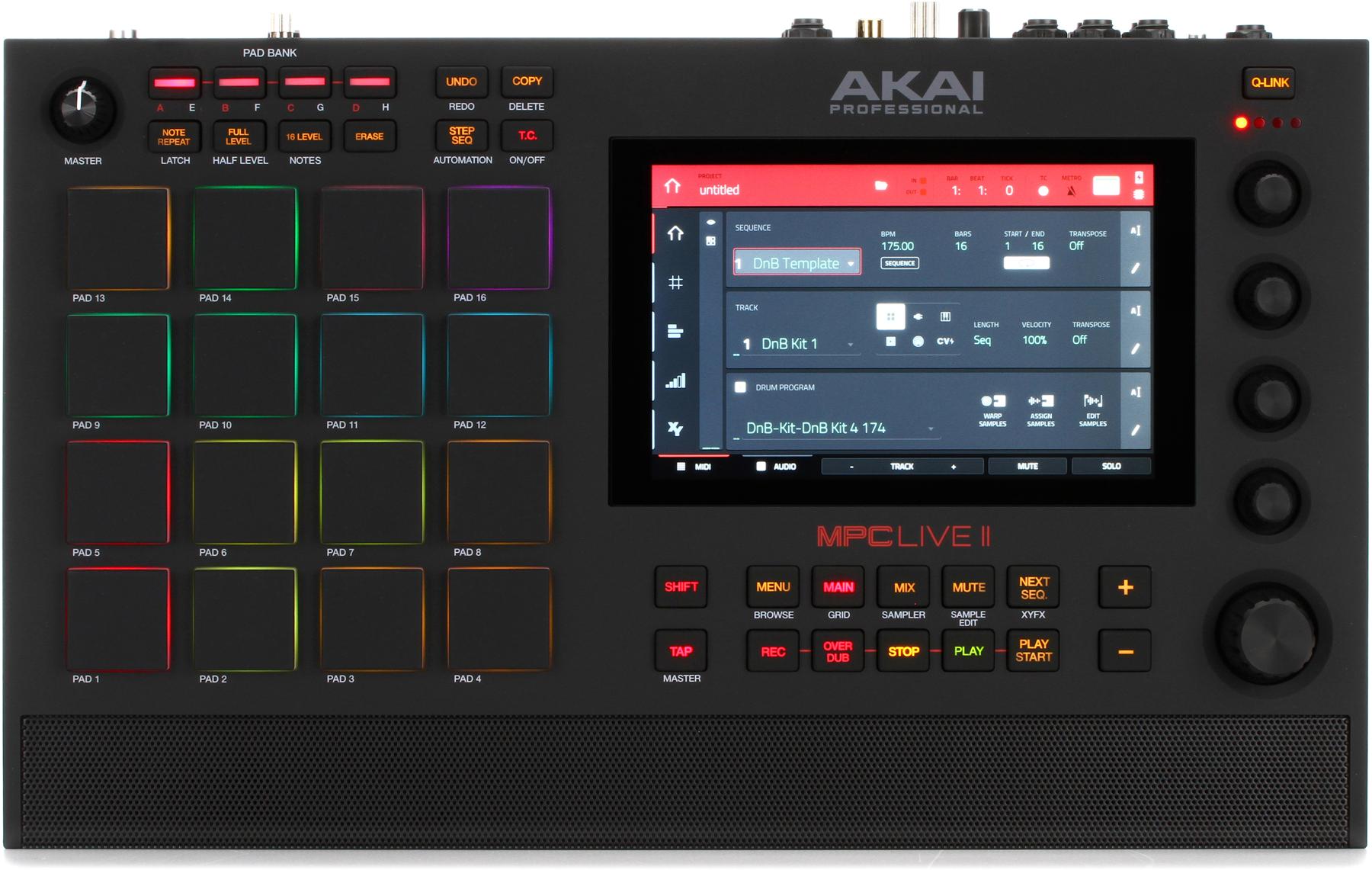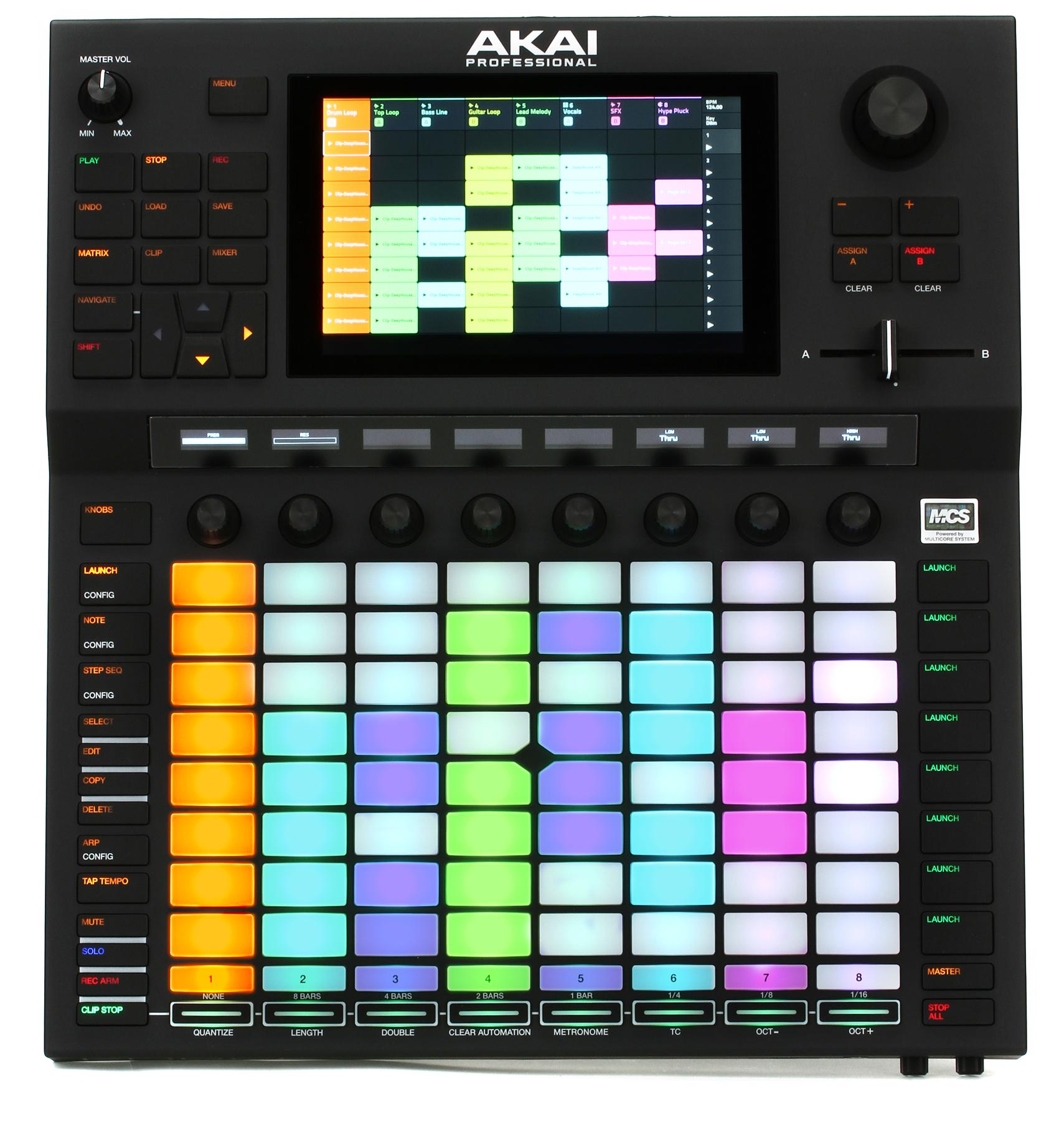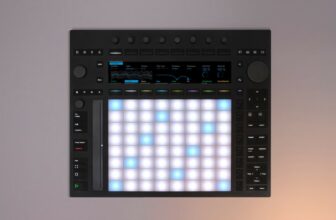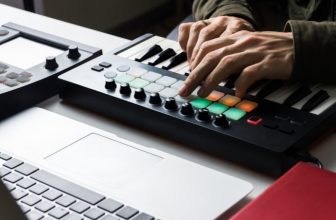Akai Professional MPC One Review (2024)
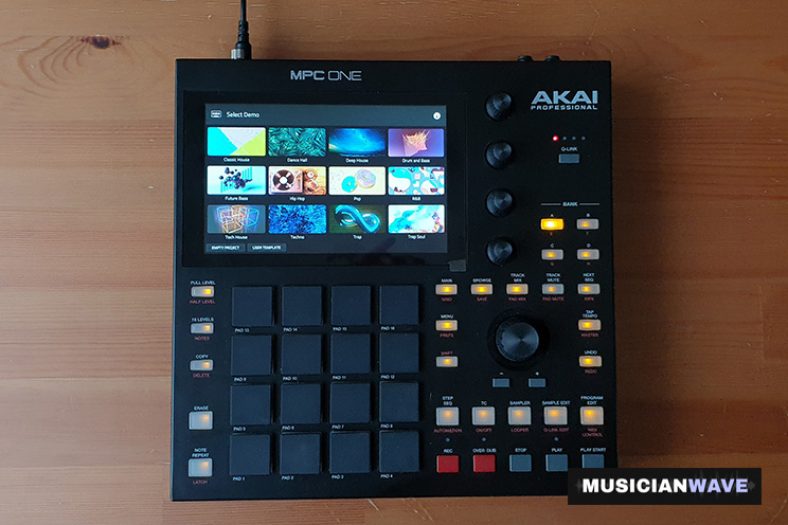
The Akai MPC One is a standalone music production unit that provides you with most of the crucial tools you’ll need, with no need to use a computer. It gives many independent musicians a chance to produce their samples on their own. You can also edit/mix/master your samples as you wish.
Carrying the Akai MPC One into practice might not be as simple if you’re not familiar with music production gear. Time is required to learn the essential functions. After that, if you need to use it in more progressive ways, you will also need other kinds of cables, accessories, and equipment, to learn how to use them.
Contents
- Akai Professional MPC One
- Pros
- Cons
- Akai MPC One
- Akai MPC One Overview
- How to Add Samples to the MPC One
- What’s it like to create a track with the MPC One?
- Pad Sensitivity
- Splice Integration
- MPC One as a MIDI Controller
- Drawbacks of the MPC One
- Alternatives
- MPC Live II
- Akai Force
- Native Instruments Maschine +
- Summary
Akai Professional MPC One
Pros
- More convenient, compact form of the MPC X
- Simplified, yet highly powerful version of MPC
- More dedicated buttons to improve workflow
- Good value based on the features it has
- Compelling sampler and beat making device
Cons
- It’s a bit pricey
- No internal battery
- No WiFi, Bluetooth, Built-in Stereo Speaker
- Complex at the beginning
In this review, while making a general overview of the Akai Professional MPC One, I will also share my personal experiences and opinions with you, wishing that they can be useful.
Akai MPC One Overview
The Akai Professional MPC One offers a portable, compact, all-in-one sampler and sequencer. The device is powered by MPC Software 2. It also introduces the 2.10 firmware update just as the other current MPC workstations, but at a lower price point.
The 2.10 firmware update supports audio interfaces to connect every fundamental studio gear such as microphones, digital pianos, electric guitars, synthesizers, drum machines, any other sound generator, studio headphones, studio monitors, and MIDI equipment.
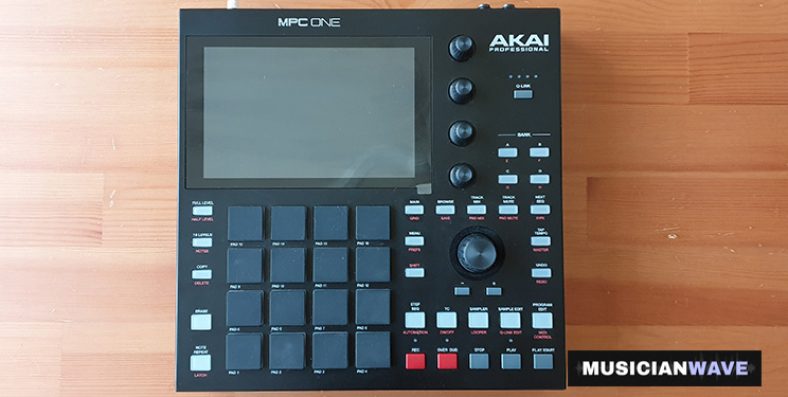
On the 7-inch touch screen, you will find the indicators to edit, trim, and file your samples. Each process gets done with the assigned knobs and touch keys. For bringing up your performance and technique to a higher level, the Tape Stop effect, Note Repeat, Full Level, and 16 Levels to play melodic 808s are available.
For mixing and mastering, you will have to mix FX and instruments including Odyssey, Hype, mellotron, and Solina; an AIR Vocal Insert Effect Suite including Vocal Doubler, vocal harmonizer, and Vocal Tuner; insert effects including Diffuser Delay, Diode Clipper, Granulator, Half Speed, Limiter, Sample Delay, and Stutter.
How to Add Samples to the MPC One
To keep the price low, The MPC One had to be made with some limitations. One of these is the 4GB of internal storage and this can be a handicap for many. In this case, SD cards and USB are fair solutions to transfer all your files and samples into a hard disk drive or into your computer. This way, you will always have enough storage to add new samples.
Keep in mind that using the MPC One standalone already gives you the possibility to have a new factory library of sounds and samples available for use. The MPC One can also connect directly to Splice by creating a network and synchronizing your entire Splice library to move inside MPC One.
Akai Professional’s instrument plug-ins are present for adding tube synth, and bassline samples and for recording your voice/instrument parts into the sequencer as well.
What’s it like to create a track with the MPC One?
In my opinion, the MPC One would be sufficient to build your own studio and to get started with your own projects, even if you have limited knowledge and/or tools of DAWs, sound-producing, sound editing, and/or sound engineering. With the existing beats, samples, and sound effects in the library of the device, the producing process gets surprisingly fun most of the time.
The Akai MPC One includes a limited set of inputs and outputs as compared to the other MPCs. There is a bank of CV/Gate outputs besides line-level inputs and outputs so that you can integrate the unit with modular synthesizers.
To connect synths, effects, and other MIDI-compatible tools, you will have MIDI I/O. There is a USB input so you can compose music with a controller instead of the pads. It also allows plugging the USB class-compliant audio interface into the MPC One, to record instrument and vocal tracks.
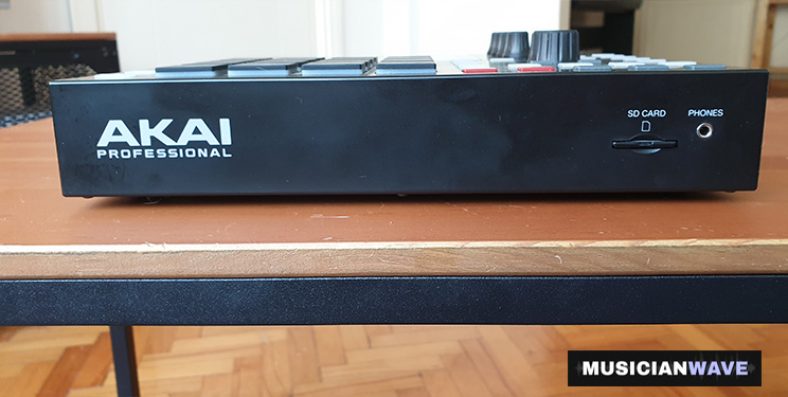
Unless you have to use the MPC One in locations without outlets, the lack of a battery would not be a big deal. For live performances/sessions though, if you perform, playing multiple instruments, probably you will need some extra devices.
The MPC workflow may not be for everyone but I think this device deserves to be considered as a powerful sampler and music-producing unit.
Pad Sensitivity
The MPC One has 16 velocity-sensitive and pressure-sensitive pads. To have a full-level sensitivity, you will need to keep the full-level setting on and adjust the pad threshold settings / the pad sensitivity settings, which you can find in the preferences section. You can also adjust the velocity sensitivity on the pad where you launch the clip. The program edit section in the menu will help.
After some practice and the right settings for your fingers and/or for the part that you will play, it works really well. Having full velocity and full sensitivity is also up to your research and practice, no matter which pad you would like to use.
Splice Integration
You can connect the MPC One directly to Splice.com. You need an internet connection and an Ethernet cable. After that, you need to plug one port of the cable into your router and plug the other port directly into the Link port of your MPC One.
In the Ethernet tab of your Preferences, you can see that you are connected to the internet. The next step will be to click the Splice button in the Preferences section and to get a login code. At this point, you need to visit splice.com/visit and sign in.
After you sign in, enter the login code that the MPC One gave you. After entering your code, click the “Link your device” button, and your device gets successfully connected to Splice. You can sync all your files and download samples as you wish.
MPC One as a MIDI Controller
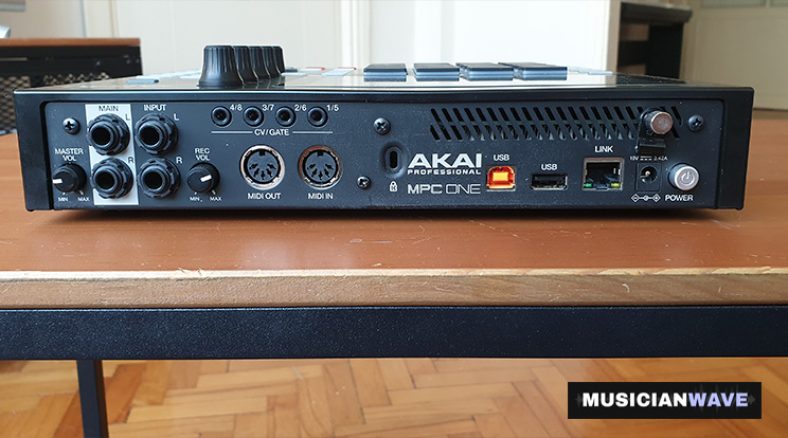
You can use the MPC One as a MIDI controller for a DAW. As the MPC One has no WiFi and no Ableton Link like the MPC Live II has, you will need to use MIDI cables or a MIDI interface and remain tethered to work with Ableton Live. It’s the same for Logic Pro or any other DAW software.
It is not as complicated as it sounds. You only need to follow the necessary steps and be patient. First of all, you need to enter controller mode. Go up in the red section, click the home button, and then again in the red section, click the MPC button and you can switch to controller mode. When you switch to controller mode, a “Looking for computer” warning is going to show up on the screen.
At that moment, you go on with your computer. If you have not set up a software instrument tracking logic yet with the MPC software on your PC, you need to create a software instrument track, and then on this particular track, you click the instrument button and choose the MPC software. Once you do this, MPC software appears and your MPC is ready to control a virtual software instrument.
Drawbacks of the MPC One
- No internal battery
- No WiFi, Bluetooth, Built-in Stereo Speaker
- No mic or guitar inputs, and no multi-outs
- Complex at first
- Hefty price tag
Alternatives
The MPC Live may be one of the best alternatives to MPC One, in the MPC series. Its price is a little closer to MPC One, compared to MPC X.
The same OS, software, processing power plus six hours- durable internal Li-ion rechargeable battery, built-in stereo speaker system, top-notch dual tweeter-woofer system; three stereo 1/4-inch TRS outputs, plus phono/line-level inputs, USB, MIDI, Wi-Fi, Bluetooth, and four TRS CV/gate outputs; 16GB of internal storage. It has even some extra features, such as Splice integration and Ableton Link compatibility.
Another alternative may be Akai Force as a standalone sampler and sequencer with Ableton Link compatibility. Prominent features are an 8 x 8 velocity-sensitive pad matrix; Integration with other hardware and modular synthesizers with CV/Gate and MIDI I/O; including over 10 GB of sounds; built-in looper; USB, SD card, and SATA drive. The price may be acceptable for many users as well.
Personally, I find the MPC One much less complicated to use, because of the design of the text-based user interface via touchscreen, and also because it has fewer buttons.
The Maschine+ is a standalone production and performance instrument, equipped with built-in Wi-Fi, a quad-core processor, a 4GB dual-channel RAM, an integrated 96kHz/24-bit audio interface, 16 multi-color, responsive pads, touch-sensitive knobs, and Smart Strip ribbon controller; over 8 GB of production-ready sounds and patterns; MIDI I/O to sequence the external MIDI gear with MASCHINE+ and vice versa.
It can operate a standalone or in a DAW-based production environment. Ableton Link integration for reliable synchronization is present.
Summary
Producing music with the Akai MPC One is a pleasurable experience. It is simple to use, inexpensive, adaptable has lots of pretty advanced features. These are my personal thoughts and reviews. I have been using it for almost a year. It is worth giving it a try.



